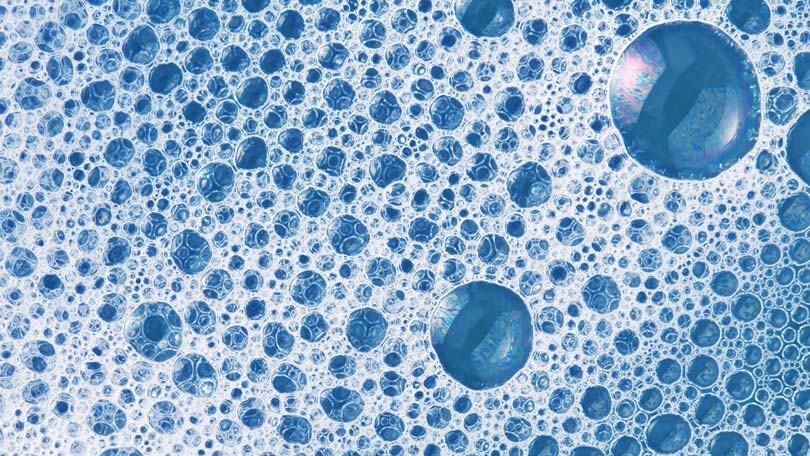
Most people would define soap scum as that irritating, cloudy residue on their shower door or tub. The technical definition goes something like this: “the substance which results from the reaction of the hardness minerals in water with common household soaps; usually evident as a bathtub ring or glass shower door film.” (http://www.airwaterice.com/)
Or, if you want to get into the chemistry of it, the molecules in soap include a “free end” that is attractive to fat molecules. In other words, soap scum is really just a combination of soap and fat (that may be worse in the presence of hard water). Paradoxically, the more soap you use, the less likely you are to have soap scum. Most people use enough soap to remove fat from themselves or their dishes, but not enough to react with all of the fat. The fat that is freed has nowhere to go but the side of the tub or sink!
Of course, defining soap scum isn’t the problem. Getting rid of it is. One of the key steps in reducing or eliminating soap scum is prevention. When you get out of the shower or bath, wipe down the tub or shower stall. Alternately, there are some daily shower cleaners that you can use. Spray them on surfaces in the tub or shower to keep soap scum at bay. Ideally, you should use this method after a thorough cleaning.
Some people also claim that switching from fatty, creamy bar soaps to liquid body wash gels reduces the amount of soap scum you produce. Based on personal experience I can agree with that statement. Of course, anyone with an environmental conscience might cringe at the thought of all those bottles needing recycling, so this option may not be for everyone.
Another method of prevention that has some proponents is the application of furniture or car wax to the walls and tub to prevent the soap scum from sticking. This method doesn’t appeal to me – it sounds slippery and I’d also worry about wax discoloring the grout between tiles – but some people swear by it.
If it’s too late for you to prevent the problem, you’ll need to work a littler harder. Because of its fat content, soap scum can be removed by anything that dissolves fat. Many commercial products contain sodium hydroxide or ammonia, both of which dissolve fat but are hard on the skin and require the use of gloves.
Looking for something a little gentler? There is a non-toxic product called Krud Kutter that has garnered good reviews. Or you can whip up a cleaner from products you probably have in your home.
Most commercial soap scum removers contain an abrasive to help scrub away the residue. You can create your own abrasive by mixing some baking soda with water to create a paste. Apply this paste and let it stand for ten minutes before rinsing thoroughly.
And what list of homemade cleaners would be complete without vinegar? You should use vinegar full strength for this job. Pour it in a spray bottle and douse the shower or tub. Let it stand for a few minutes, or longer if the soap scum has been there for a while, and then wipe clean.
No time to create your own cleaner? Dryer sheets seem to have a good reputation when it comes to removing soap scum. Just use them as you would any rag to wipe down the walls and tub. But, you may want to read about the possible health effects of fabric softeners before you try this option.
